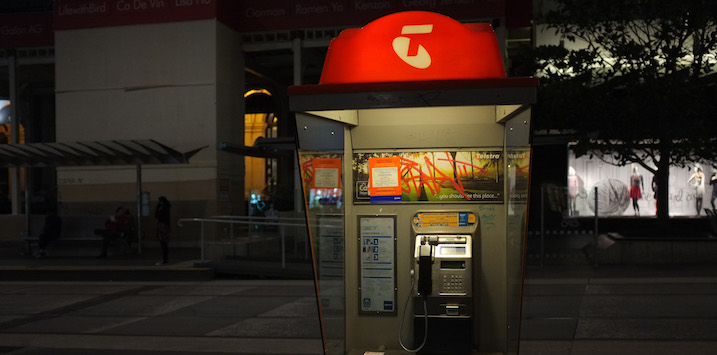
Telstra’s future is looking rosy
Telstra (ASX:TLS) has been one of the better performers among Australia’s large caps over the past year, and we see more upside ahead. There are two good reasons for our optimism.
First, we expect that over the medium term, Telstra stands to benefit from strong growth in the number of devices connected to the internet via mobile networks, due to a confluence of improved mobile technology (5G), and evolving use cases including things like autonomous vehicles and a host of other applications yet to emerge.
The second part of our thesis is that the economics of Telstra’s fixed broadband business will improve over time. Currently, resellers likeTelstra earn close to zero margins reselling NBN services, and our assessment is that this is not sustainable.
What is less clear is what path might be taken to arrive at a more sustainable level of fixed broadband industry economics. The possible paths include:
- NBN lowers its wholesale prices to allow resellers to earn higher margins; and
- Mobile network owners like Telstra and Optus use their mobile networks to offer a 5G alternative to NBN.
While the end result (improved broadband profitability) should be beneficial toTelstra regardless of the path taken, the way that end result is achieved should make for some fascinating corporate strategy in the next few years.
The government has historically viewed wireless as not being a close substitute for NBN, due to lower speed and capacity. However, Optus has been conducting limited trials of a 5G alternative, and if company announcements are to be believed, the results have been very encouraging. In parts of the market at least, Optus appears ready to offer a superior service at a comparable price. What is yet to be determined is how readily this might be translated into a broad market offering.
To the extent that 5G wireless can be proven to be a viable alternative for a large percentage of the NBN’s user base, the government/NBN Co may have a difficult choice to make: either lower wholesale prices materially (and accept the resulting write-down to the value of NBN Co) to discourage investment in the 5G alternative, or accept progressive erosion of the customer base over time (resulting in a write-down to the value of NBN Co).
Telstra has been relatively quiet so far on the potential of 5G as an NBN substitute, and this may reflect the particular circumstances of the agreements Telstra entered into with NBN Co in 2011, including an obligation not to promote a wireless NBN alternative for 20 years. However, Telstra has been very clear that it intends to invest early and at scale to ensure 5G leadership, so will likely have the capacity to provide such a service even if it is restricted in promoting it.
For now, Optus appears to have put the ball into the government’s court. We await the next developments with interest.
The Montgomery Fund and Montgomery [Private] Fund own shares in Telstra. This article was prepared 13 November with the information we have today, and our view may change. It does not constitute formal advice or professional investment advice. If you wish to trade Telstra you should seek financial advice.
The original NBN was that every connection was to be a fibre-optics. What has happened since the start of the construction of the NBN, the NBN could be best described as a hotch-potch of FTTP (optical fibre connection), HFC, FTTN, and FTTC (curb). The results is that performance is variable. depending on the technology. Fibre optic connection to the premises has the best performance followed by a Fibre to the curb. The other technologies may well have less performance.
Basic science tells us that light is a higher frequency than radio frequencies by several orders of magnitude. Definitely much higher than 25 GigaHertz, the frequency spectrum used in 5G and definitely higher than your microwave oven’s frequency of 2.4 GigaHertz and Wifi (2.4GHz and 5GHz). Light will always carry more information than radio frequency ever will even with the best PR and spruikers from AM breakfast announcers.
I know this because in my second year science laboratory project I was awarded marks in a laboratory assignment about why a fibre optic didn’t seem to carry that much information.
As time passes, the electronics and optics required to transmit and receive information via a fibre optic network will improve. Thus fibre optics is the ultimate in high bandwidth transmission.
As more users utilize the 5G system and using the 5G system at the same time, will the fast speeds touted at the start of discussion of how good 5G is diminish? I would certainly need to consult with an engineer knowledgeable in the capacity of 5G to deliver high bit-rates of information when there are many users in the same cell of a cellular network.
At the moment, the government’s botching of the technology used to deliver the NBN may well make 5G a good proposition.
But like technology being able to usurp/destroy the status quo, so too does government policy, where interference with the market by botching the technology of the NBN may make the NBN go backwards. That’s unless there is a change of policy which enables private providers to provide the fibre optic infrastructure in the same way that private enterprise such as AGL provided the gasline infrastructure more than 130 years ago.
Regards
Anthony of exciting Belfield
I suppose the question is will data need to be piped mostly via NBN and then via 5G over a short distance or if 5G can itself be repeated all over the place with the problem being weather, if this weather problem can be overcome – and I am not sure how it can be 5G might be able to take over. Also, what stops Telstra giving discounts if people put an antenna on their roof so that coverage is improved.